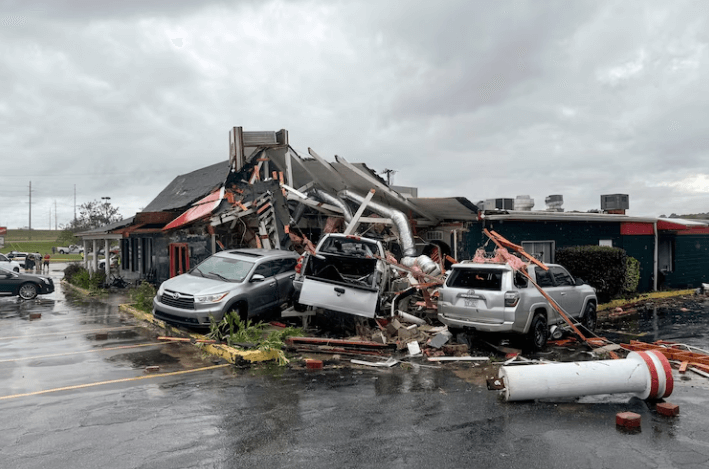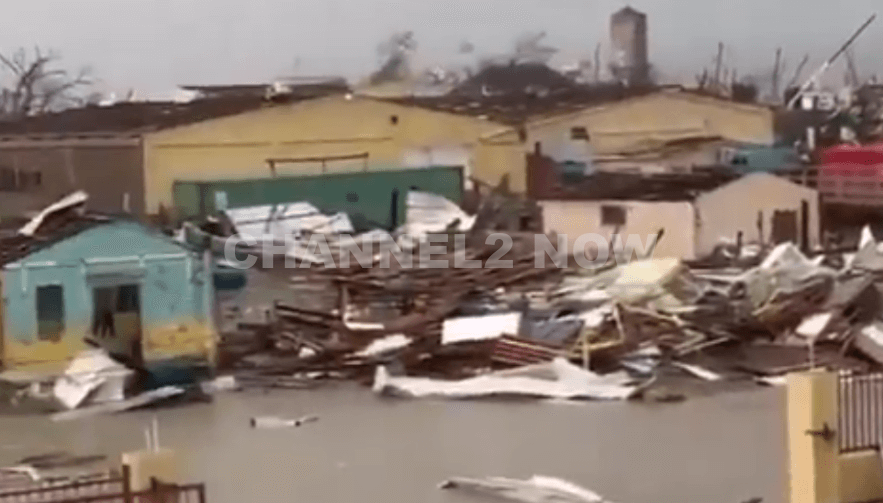Weather
Hurricane Helene Death Toll Risen: At least 200 people killed, What we know about victims so far

Hurricane Helene, the deadliest hurricane to strike the mainland United States since Hurricane Katrina in 2005, has claimed the lives of at least 193 people. Hundreds remain missing, and the death toll is expected to rise.
The storm ravaged several states, with North Carolina bearing the brunt of the damage. Over 100 fatalities have been reported in the state alone, with Buncombe County accounting for the highest number of deaths.
South Carolina, Georgia, and Florida also experienced significant losses, with dozens of fatalities reported in each state. Tennessee and Virginia recorded smaller numbers of deaths.
As rescue efforts continue, the full extent of the damage caused by Hurricane Helene is gradually becoming clear. The storm’s devastating impact will be felt by communities across the region for years to come.
Breakdown of Fatalities by State:
- North Carolina: 101+ deaths (hundreds missing)
- Buncombe County: 61+ deaths
- Yancey County: 9 deaths
- Henderson County: 6 deaths
- Haywood County: 6 deaths
- Avery County: 5 deaths
- Cleveland County: 2 deaths
- Watauga County: 2 deaths
- Catawba County: 1 death
- Gaston County: 1 death
- Polk County: 1 death
- Mecklenburg County: 1 death
- Macon County: 1 death
- Madison County: 1 death
- Ashe County: 1 death
- Yadkin County: 1 death
- Burke County: 1 death
- Rutherford County: 1 death
- South Carolina: 37 deaths
- Spartanburg County: 6 deaths
- Aiken County: 6 deaths
- Greenville County: 6 deaths
- Saluda County: 4 deaths
- Anderson County: 4 deaths
- Laurens County: 3 deaths
- Newberry County: 2 deaths
- Chester County: 2 deaths
- Greenwood County: 1 death
- Chesterfield County: 1 death
- Richland County: 1 death
- York County: 1 death
- Georgia: 25 deaths
- Richmond County: 6 deaths
- McDuffie County: 4 deaths
- Lowndes County: 3 deaths
- Wheeler County: 2 deaths
- Laurens County: 2 deaths
- Jeff Davis County: 2 deaths
- Washington County: 2 deaths
- Colquitt County: 1 death
- Pierce County: 1 death
- Liberty County: 1 death
- Columbia County: 1 death
- Florida: 19 deaths
- Pinellas County: 12 deaths
- Hillsborough County: 2 deaths
- Dixie County: 1 death
- Charlotte County: 1 death
- Others: 3 deaths
- Tennessee: 9+ deaths (85+ missing)
- Cocke County: 2 deaths
- Unicoi County: 2 deaths
- Johnson County: 1 death
- Greene County: 1 death
- Others: 3 deaths
- Virginia: 2 deaths
- Craig County: 1 death
- Tazewell County: 1 death
Key Points:
- Deaths: At least 200 confirmed fatalities across four states, including firefighters killed by a falling tree and residents who ignored evacuation orders.
- Widespread Damage: Homes destroyed, towering trees snapped, power outages impacting millions, and infrastructure damage in Georgia and South Carolina.
- Flooding: Catastrophic flooding across the region, with some areas receiving over a foot of rain. North Carolina facing potential historic flooding.
- Rescue Efforts Ongoing: Emergency crews working tirelessly to reach stranded residents trapped in floodwaters.
- Financial Impact: Moody’s Analytics estimates $15 to $26 billion in property damage.
Heartbreaking Stories:
- Laurie Lilliott in Dekle Beach, Florida, returned home to find her roof collapsed due to the storm surge.
- Kera O’Neil in Hudson, Florida, was forced to escape her home chest-deep in floodwaters with her cats.
- Residents in Unicoi County, Tennessee, were rescued by helicopter as floodwaters inundated their hospital.
Hurricane Helene’s devastating impact on Georgia has resulted in multiple fatalities. Among the victims is firefighter Vernon “Leon” Davis, who lost his life while rescuing others in Blackshear.
The storm also claimed the lives of a 4-year-old boy and a 7-year-old girl in Washington County. A tree fell on their bedroom, tragically ending their lives.
In Wheeler County, two individuals were killed when a suspected tornado tore through the area, overturning their mobile home.
Laurens County has reported two additional fatalities, including one death attributed to a vehicle crash.
As authorities continue to assess the damage and recover victims, the full extent of Helene’s tragic toll in Georgia is becoming clearer.
Recovery Efforts Begin:
- President Biden offered prayers for survivors and deployed FEMA resources to assist with rescue and recovery.
- Over 1,500 FEMA workers have been deployed and assisted with 400 rescues by Friday morning.
- Power companies face a long road to restoring power to millions of homes and businesses.
- Officials warn of potential hazards in floodwater, including live wires, sewage, and debris.
Climate Change Concerns:
- Experts warn that climate change is intensifying hurricanes, leading to more powerful and destructive storms.
Looking Forward:
- The full extent of the damage is still being assessed, but it will take days and weeks to fully recover.
- The storm highlights the need for preparedness and the importance of following evacuation orders.













